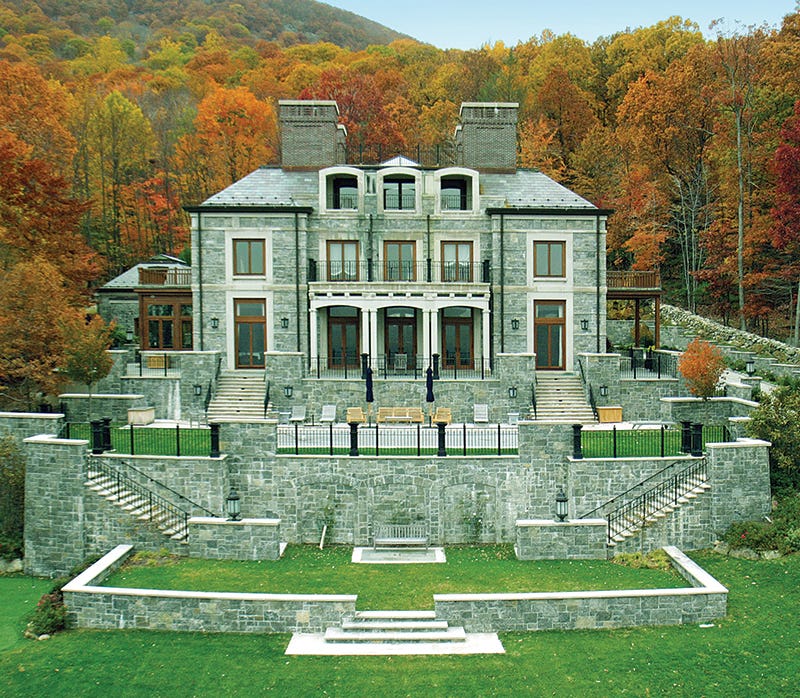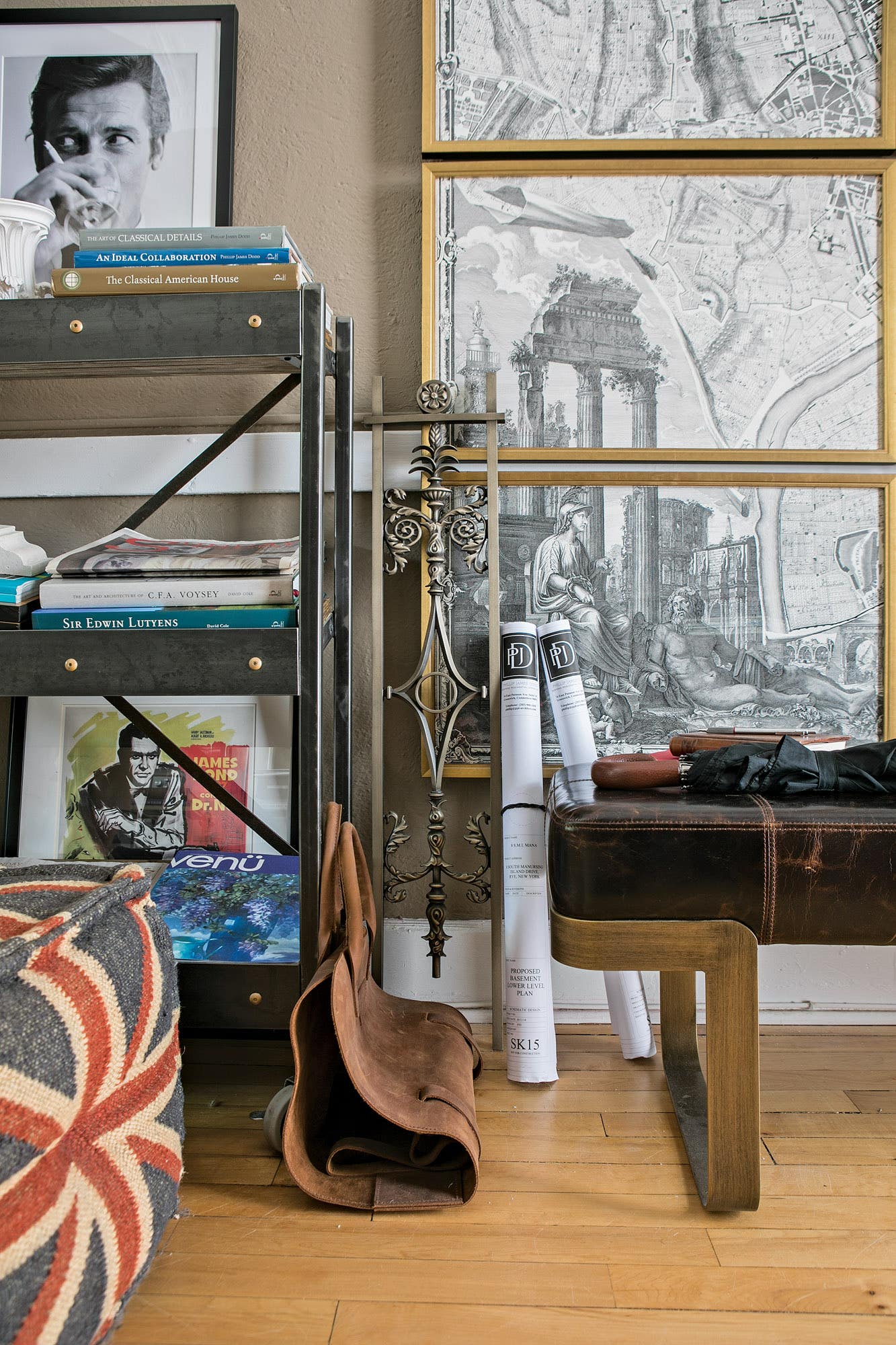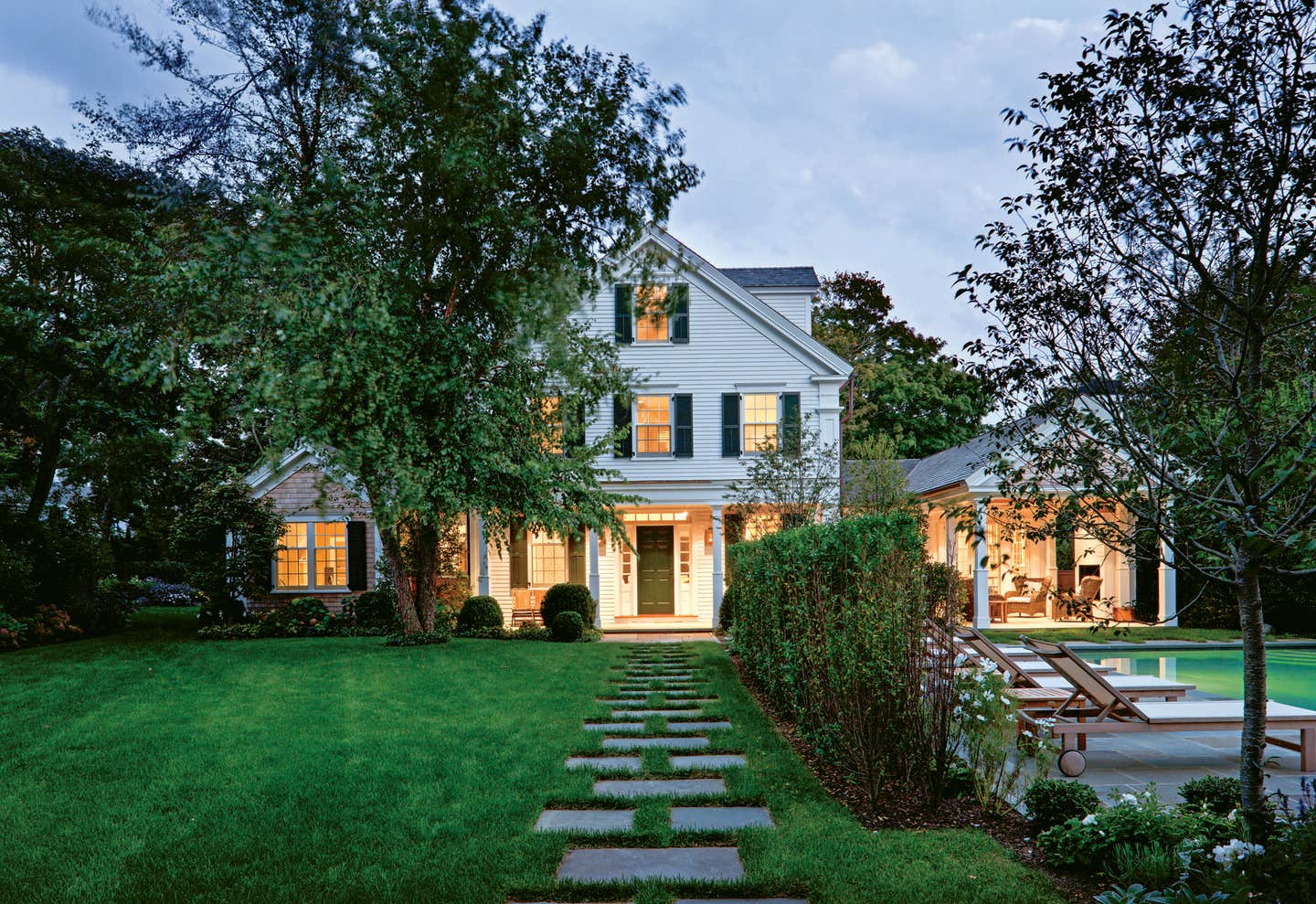
Profiles
Place-making: Zivkovic Connolly Architects
From its international roots to its diverse clientele, Zivkovic Connolly Architects PC defies easy categorization. Its principals, Don Zivkovic and Brian Connolly, hail from opposite sides of the world – Australia and Ireland – are based in New York City, and cite Italy and Japan as architectural influences. Among the firm’s award-winning portfolio of residential, institutional, commercial and interior design projects are Classical estates, modern penthouses, a centuries-old Irish church, and one of the most celebrated additions in New York City memory. What is absent, however, is a dogmatic adherence to style. “We like to use all the tools in the toolbox,” says Zivkovic, founder and president. “We are interested in modern and traditional architecture but generally, we like ‘good’ architecture. There is a spectrum, but you don’t have to go to either end of it.”
“We consider ourselves contextualists,” adds Connolly, vice president. “It is about place-making. We’ll respond as closely as we can to the client and setting, and then make it unique. We are certainly not purists, and we don’t believe that modern must equal Modernist. Traditional designs can certainly respond to contemporary needs.”
Zivkovic grew up in Australia but has been in private practice in New York City since 1985, where he graduated from Columbia University with a master’s degree in architectural history. The son of Yugoslavian immigrants, he was drawn to history and philosophy and chose his profession in his late teens. U.S.-born Connolly, who returned to Ireland with his family at the age of 12, was drawn to buildings “on day one.” His early fascination with Meccano forecast a future in engineering, until a career-guidance aptitude test proved a 100% match for architecture. Consequently, Connolly graduated from architecture programs at Dublin’s Institute of Technology and Trinity College, before qualifying, with honors, as a member of the Royal Institute of the Architects of Ireland. He returned to the U.S. in 1986 and joined Zivkovic in 1986, as a project architect then partner.
ZCA’s work has been recognized with a number of national and international honors, including a Palladio Award for an addition to the Carhart Mansion in Manhattan’s Carnegie Hill district (see Period Homes, July, 2007). Designed in collaboration with John Simpson & Associates of London, England, the addition was one of the first Classical buildings to be built in the city in decades, and has been described by Francis Morrone, historian and architecture critic at the New York Sun, as “… quite simply one of the best buildings in Manhattan in the last half century.”
The project comprised the full renovation of Horace Trumbauer’s 1916 landmark mansion on East 95th Street plus the addition of a new adjacent townhouse that increased its total footprint to 50,000 sq.ft. Municipal planning parameters and real-estate market forces, as well as context, aesthetics and the wishes of local community groups, defined the design process, which hinged on the modern question of differentiation: How much, if any, similarity should there be between the old and new?
From the outset, for both aesthetic and pragmatic reasons, ZCA conceived of the addition as a Classical building, as different to its neighbor as it is similar, and appropriately deferential. Its solid-masonry construction technique avoids unsightly control joints and allowed for deep reveals at window and door openings, while its solid-void arrangements, stone rustications, molding profiles and massing are of a discretely different rhythm to its predecessor’s. “It is respectful of both its neighbors and the quiet dignity of a tree-lined street full of fine historic architecture from a century ago,” says Connolly. “The Carhart Mansion celebrates Manhattan’s grand urban tradition while at the same time, being an original Classical design that is very much an expression of its own time.”
Also on Manhattan’s Upper East Side, ZCA echoed this sentiment with a new townhouse that filled a vacant lot and harmonized the material palette and architectural character of the street. Its façade complements its adjacent neighbor, a landmarked Cross & Cross-designed neo-Georgian, and incorporates an unusual double stoop. “The arrangement facilitated the central placement of the entrance portal at the piano nobile level of the new building,” says Zivkovic, “thereby raising its base height above the sidewalk to improve the owner’s interior privacy at that level, while enhancing the overall proportional system and concomitant dignity and scale of the principal elevation.”
As admirers of solid-masonry construction, Zivkovic and Connolly could base themselves in no finer example than New York City. However, a new private estate presented a rare opportunity to re-imagine the stone-based architectural tradition of Irish Palladianism within the Hudson Valley (see Period Homes, September, 2007).
Nestled within 15 acres of a hillside at Mt. Taurus, the new house and terraced gardens overlook the treetops of adjacent reserve lands and the steeples of the village of Cold Spring, as well as the Hudson River and West Point Military Academy beyond.
The client favored timeless simplicity of form, modesty of detail and a sense of sturdiness and shelter. To create the desired sense of robustness, the main volume of the house comprises a four-square symmetrical block that is reinforced by four square chimney towers at each corner, which also conceal an elevator motor room, plumbing vents and other mechanical equipment. Over-size windows and French doors take full advantage of the estate’s panoramic views of the Hudson Valley and integrate the natural beauty of the surroundings with the interior.
“The articulation of the masonry that defines the house was inspired by the local West Point aesthetic of dominant granite fields and limestone detailing,” says Connolly. “The simple stone-block volume and brick chimneys also suggest another American architectural icon – 18th-century Virginia’s Stratford Hall – in order to further domesticate the original Irish Manor-house model and to help secure the house its own sense of place.”
The difference between a dominant stronghold and a modest residence is not one of scale, but of composition. For an over 7,000-sq.ft. home in Scarsdale, NY, ZCA disguised the overall volume to blend with the traditional scale of neighboring Colonial and Shingle styles and the surrounding mature landscape. The spacious second story is a habitable attic, whose roof form is punctuated by a central roof monitor, cupolas, dormers and semi-circular clerestory to provide ample daylight and ventilation. Below, the massing is an informal blend of traditional residential styles, anchored at the entry porch by a pair of prominent gables that reference the iconic 19th-century work of McKim, Mead & White.
“The selection of material types and colors – white clapboarding, natural cedar shingles and native stone – and the intricacy of the architectural detail reinforce the intimate, domestic character of the design and sensitivity to both its architectural and natural environment,” says Zivkovic. “The variegated composition of windows and rooflights orchestrates a suffusion of daylight within the interior spaces of the house, as well as providing an immediate and harmonious connection between them and the beauty of the 1.25-acre property.”
ZCA’s interior design services are a highly creative component of the practice, where architectural sensibility meets an unlimited range of client tastes. The challenges of appropriateness and sensitivity remain, however, as was the case at the landmarked Osborne building, located diagonally across from Carnegie Hall.
Designed by 19th-century architect James Ware, the 3,000-sq.ft. penthouse apartment has long been a preferred residence for musicians, writers and artists, among them the former Metropolitan Opera singer Lorenzo Alvary. ZCA worked with Alvary’s family to update the apartment for a contemporary lifestyle and to more effectively display Alvary’s noteworthy art collection.
ZCA’s renovation substituted the somber original décor for a confident new color scheme and sensitively modified the layout for more open, flowing interior spaces. Decorative flooring with complex geometric patterns (a hallmark of the Osborne building) was uncovered, reconfigured and restored, while original wood trim was stripped of excess paint and repaired or replicated as necessary. The foyer’s polished Venetian-plaster walls provide a strong new context for works by Pablo Picasso, Fernand Léger and Henri Matisse, while collections of Baroque and other period furnishings, and items of Chinoiserie, add to the sense of eclecticism.
In the “Strivers Row” section of Harlem, a landmarked building designed by 19th-century architect James Brown Lord had suffered a familiar fate. Dissected into a dozen small apartments, it had also deteriorated beyond recognition over the decades. “Its original features were severely compromised and, in some cases, mutilated or entirely destroyed,” says Connolly.
ZCA restored the building to its original condition, inside and out, but reduced the number of residential units to three for more comfortable multi-family use. The firm focused on the careful restoration of architectural detail, but was careful not to create the illusion of new. “Significant repairs were effected as needed,” says Zivkovic, “although minor imperfections in the woodwork were retained as testament to the authenticity of the material and its articulation, and to preserve the patina of history that is often compromised in overdone restorative treatments.”
Original quarter-sawn English oak, which comprised the building’s most characteristic interior features, was stripped of accumulated paint layers – a process that frequently revealed fine carving in the paneling and trim underneath. The wood was then hand-rubbed and sealed, completing the rehabilitation of this distinguished example of the historic New York City townhouse.
In a multi-faceted project that drew upon ZCA’s combined experience and skills, the firm recently embarked on a project to preserve a major piece of architectural history and enhance the surrounding Garden City, Long Island community.
The proposed 130,000-sq.ft. apartment and community-facility complex would be accommodated within the nationally significant St. Paul’s grammar school, which was designed by 19th-century architect Henry G. Harrison and is located on 48 acres of local municipal farmland. Severely deteriorated and derelict for many decades, the building is an important example of the High Victorian Gothic style, characterized by its unique poly-chromatic voussoir arched windows, elaborate cast-iron balustrades and Dorchester stone trim.
In addition to 50 residential units, ZCA designed extensive new formal gardens and public meeting and recreational amenities. “The ultimate goal of this public-private preservation project was to revive and reinstate, to active contemporary use, a grand and historic architectural legacy,” says Connolly. “The intention was to fully restore the exterior to its former glory, as well as the principal public interior spaces, and to design a major new building addition that would fit seamlessly into the existing historic context.”
Beyond creating work of enduring value, ZCA is committed to strengthening the profession of architecture at large. Zivkovic is affiliated with the American and Royal Australian Institutes of Architects and the Institute of Classical Architecture & Art (ICAA), where he and Connolly also sponsor a national drawing prize. He has served as president, and on the national board, of the New York Chapter of the Society of American Registered Architects, as director of the Architects’ Council of NYC, and, for many years, as chair of the jury of the Society of American Registered Architects’ Student Design competition. Zivkovic is a regular guest critic at schools of architecture and his trusteeships include the Board of the Thomas Paine Museum and National Historical Association and the Lycée Français de New York. In 2008, the French government recognized his significant contributions in building for education with an historic Order of Chivalry.
Connolly is a member of the Irish Business Organization of New York and has served on the construction industry’s International Building Products Advisory Board for the Irish government. He is a fellow of the ICAA and chairs its publication committee, whose focus is on the preservation and reprinting of important treatises and monographs, such as the latest edition of Paul Letarouilly’s Le Vatican et la Basilique de Saint Pierre, which was also subsidized by ZCA. As co-founder of the not-for-profit St. Brendan the Navigator Restoration & Education Foundation, Connolly facilitated the restoration of Ireland’s 12th-century Hiberno-Romanesque Cathedral and authored the historical report that prompted action from the World Monuments Fund. He has served as a guest critic at several architectural schools and as a juror for the Palladio Awards program.
As architects and influencers, Zivkovic Connolly Architects is guided by a strong sense of environmental awareness and stewardship. “It would be unthinkable for a music student not to learn scales or to study some Classical music as part of their training,” says Zivkovic. “Yet the majority of architectural schools no longer teach the study of proportion, much less an appreciation for historical buildings. Indeed, some schools even downplay the past as though it had little relevance today. We feel part of our role is to make younger architects aware of gaps in their formal education and to help them to discover the lessons of other, often greater periods of architecture and urbanism.”








